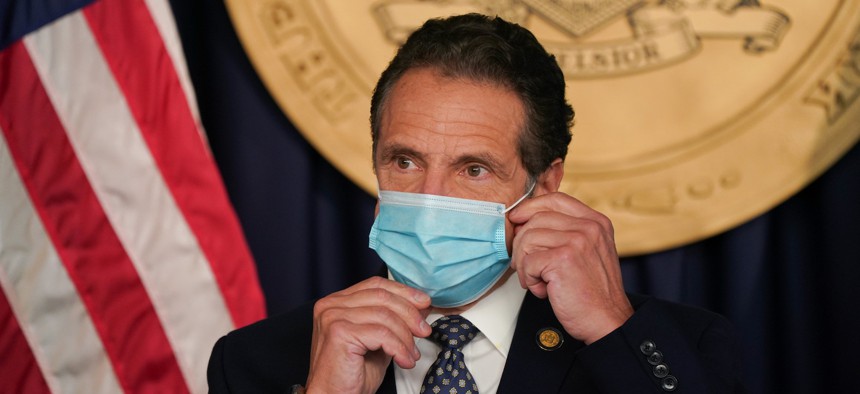It’s not just the weather outside that is reminiscent of springtime: COVID lockdowns are once again in place across Europe, while rates of infections in New York are alarmingly similar to how the pandemic blew up in the early spring. Local officials are issuing increasingly dire warnings about the situation. “This is our LAST chance to stop a second wave,” New York City Mayor Bill de Blasio tweeted Wednesday morning. “We can do it, but we have to act NOW.”
There are a few big differences between the latest surge and what happened in early spring. The expansion of both testing and contact tracing offers more sophisticated approaches to controlling the pandemic compared to the sweeping lockdowns of the spring. Survival rates for hospitalized COVID patients have greatly improved. And the coronavirus and COVID fatigue are more widespread than ever.
The situation in New York is nowhere near as bad as it was in the early spring, but that could change in the upcoming weeks if increasing community spread makes the state’s current “microcluster” approach ineffective at keeping things under control.
“There is not one group (or) community causing the increase,” Erie County Executive Mark Poloncarz said Tuesday, echoing warnings from elected leaders in the Syracuse, Albany and New York City areas about the worsening crisis. “Cases are occurring in every community.”
The latest state data shows every region of the state – with the exception of the North Country – is reporting more than 10 new cases per 100,000 people, which was the threshold the state previously set for imposing a 14-day quarantine on residents arriving from other states. Rates of infection are particularly high in places like the Southern Tier, Western New York and Central New York. Rt – the number of people infected by the average COVID-positive person – is now at its highest level since March 19. New cases are at their highest level since the beginning of May.
These increases are testing the microcluster approach that Gov. Andrew Cuomo has adopted for controlling the pandemic moving forward. The strategy leans on research that shows how a fraction of COVID-positive people – superspreaders – disproportionately cause a majority of infections. By targeting local areas with high infection rates as they pop up (public health “whack-a-mole” if you will), the thinking goes, a wider community spread can be avoided.
Reimposing public health restrictions at the regional and statewide levels is something that the governor and other elected officials are still trying to avoid. “We do have a chance, I think, to flatten that curve if we can start to hunker down more, just by taking more precautions as a city,” New York City Council Health Committee Chair Mark Levine told NY1 Tuesday. Yet, avoiding more aggressive restrictions could become more politically untenable if the situation continues to worsen at an accelerating rate – similar to how Cuomo and other elected leaders were convinced to impose a statewide shutdown in the spring after initially downplaying the idea of New York following the lead of Italy and China. Municipal leaders like de Blasio are already suggesting that the time is coming to close down indoor dining even as they lean on individual citizens to double down on abiding by current public health rules. “Unless people are very vigilant with what they do, we are going to see these numbers go up,” Albany County Health Commissioner Elizabeth Whalen said Tuesday. “And what happens when those numbers start to go up? Our hospitals start to fill up and we start to hit surge capacity.”
New guidance from the Centers for Disease Control and Prevention highlights how masks protect the people who wear them as well as other people. Research shows how avoiding social interactions limits the spread as well. Encouraging people to remain isolated after testing positive also depends to a significant degree on elected leaders acting responsibly about their own infections.
Just how bad this wave of the pandemic will be remains to be seen, but caseloads are regularly hitting record levels nationwide. The vast spread of the virus means resources cannot be focused on any one place like in the spring when health care workers and national goodwill arrived in New York. Resources are stretched thin across the country, which means individual states are increasingly on their own when it comes to making sure their hospital systems do not get overwhelmed, which could lead to death rates in New York comparable to those in March and April.
There are plenty of reasons to be pessimistic about where things are heading in the Empire State, starting with the knowledge that a new president and an effective vaccine are still some two months away. Only once the fall and winter have passed will we know whether staying the course with the current microcluster approach will have proved any wiser than what elected officials were saying back in late February and early March when the state remained on course for disaster despite all the warning signs.


